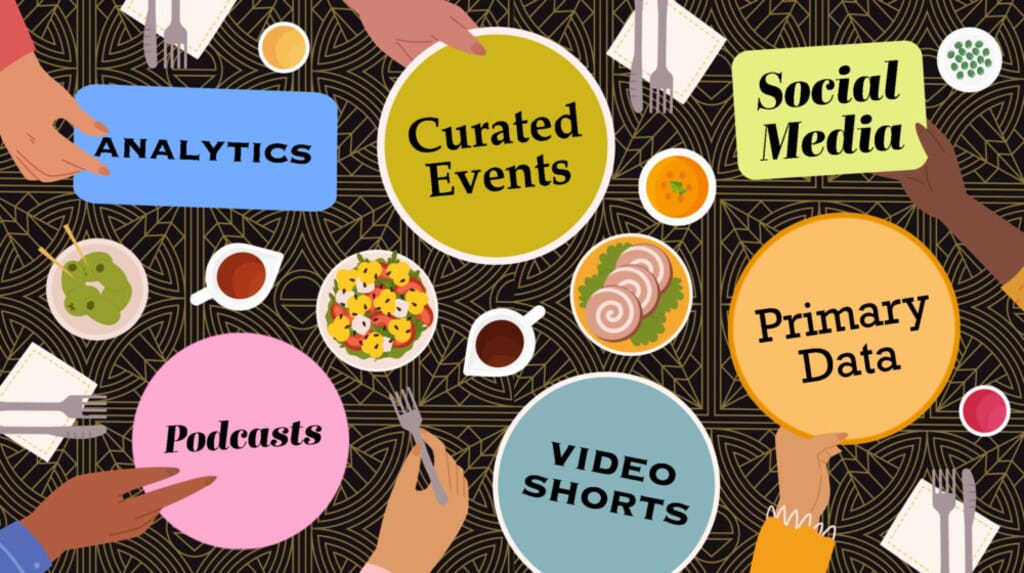Getting white papers right
Research shows that people increasingly look to companies rather than the media for trusted information. White papers provide one of the most effective mediums to satisfy that need – when done well.
When is a white paper not a white paper?
The simple answer to this riddle is when it is an article instead. But in practice, it’s very easy to confuse the two content forms since they share many characteristics in common.
Both often overlap in length around the 1,500-word mark (the long end for an article and the short end for a white paper, which can be anywhere from 1,500 to 20,000 words and more).
They also frequently contain many of the same structural elements such as primary research and external interviews, plus design features like infographics and pull quotes.
What distinguishes a good white paper from an article is impact and longevity. Short of writing a book, it is arguably the most effective form of thought leadership there is for influencing key decision-makers, whether they are a client, a supplier, or a government official.
This is because white papers contain insights and data that move the discussion forward on any given topic. Their longer length and deeper research give the subject matter time to breathe, providing more nuances for readers who are probably already versed in the basics.
Such readers are likely to be appreciative towards the company that produces them, making white papers a high-reward product that can deepen existing relationships and forge new connections.
Indeed, this January’s Edelman annual trust barometer revealed that 48% of global respondents view business as a reliable source of trustworthy information compared to 42% for the media.
Getting white papers right
So what should your white paper strategy be and how do you execute it? Here are a few tips:
1. Planning
Standing out from the crowd is never easy. Careful planning makes this far easier, especially for a content product that has far more moving pieces: from commissioning surveys to conducting multiple interviews.
At the outset, the two main interlocking decisions are what topic to cover and who the target audience is. This includes whether the topic is relevant for the company publishing the paper and if it will help to solve specific business goals such as generating new sales leads, or shaping policy debates.
When it comes to timelines, it is important to have one and be realistic about what’s involved. For example, it’s good to incorporate a buffer if there are multiple contributors, some of whom are either not professional writers and/or have a “day job,” which might mean they take longer to complete their part.

2. Research
This is what makes a white paper stand out from an opinion-driven article or a blog. If you really want to say something new, then there’s no substitute for good research, especially primary research.
The secondary research begins before settling on a topic. It is always good to conduct a sweep of existing research to evaluate how current thinking can be extended, or what gaps might be filled.
This can then be expanded once the paper gets under way. Secondary research is a key element since it helps to convince readers that the author/s have considered all angles and really understand the field.
But it can quickly become overwhelming, so it’s good to continuously keep note of where information is coming from. Factual information and quotes should always be sourced on the basis of accuracy and reliability.
Data should also be the most up-to-date available. Keeping on top of the secondary research then helps to make the sub-editing and fact checking process much easier.
“Primary research can take a number of different forms: from surveys to interviews. Both are important: the former to uncover new trends and the latter to provide a range of individual viewpoints.”
White paper surveys do not need to be long and complicated. The key is ensuring that questions are focused and respondents are selected for relevance.
3. Design
Visuals often grab the reader’s attention first. They’re particularly important for white papers because they also help to break up the large amount of text.
As with any content form, good photographs bring a subject matter to life. They are also more appealing when they are natural rather than staged images.
All forms of data visualisation and infographics come into their own with white papers. They’re perfect tools to highlight and reinforce key findings.
Readers like them because they find it much easier to absorb information this way.
Data Visualisation Examples
a) Pie chart example
If you had to choose, which of the following would you prefer to read
Source: SurveyMonkey Audience Survey, 1,000 US adults 2018
b) Donut chart example
Importance of content for B2B marketers over the past 12 months
Source: Content Marketing Institute, 13th annual survey July 2022
4. Structure
Keeping readers engaged from beginning to end is the goal of all content, no matter how long or short. Creating a compelling narrative hinges around structure and flow: marshalling thoughts in a coherent order and breaking up text into manageable chunks.
White papers’ longer length means they benefit from clear sections in the same way that books do with chapters. One difference between the two lies in the fact that people typically read books front to back (unless they are desperate to find out the ending), whereas they often skip to particular sections in white papers.
Here are the main elements to consider:
- Cover page – Choose a striking image, headline and tagline that work together as a package, enticing the reader to dive in.
- Contents – The longer the paper, the more important this page is. It helps readers to easily jump to and from sections that interest them.
- Foreword – This isn’t essential, but offers useful validation since the author is typically an external expert.
- Introduction or executive summary – This should be a single page summary of what readers can expect, including some of the key findings. It is typically by-lined by the most senior person at the organisation producing the white paper.
- Summary, recommendations or tips – These help to guide readers, enabling them to make sense of what they’re reading. They also reinforce the main points and messaging, prompting calls to action. Not all white papers need recommendations, but they do need a good summary.
- Appendices – Longer white papers benefit from placing supplementary information in appendices rather than the main text where it might disrupt the flow.
- Footnotes or references – All external factual information and quotes should be attributed, either through footnotes at the bottom of each page or as a list of references at the back. Doing so, reassures readers that the white paper has been carefully sourced and provides interesting new avenues to explore.
5. Marketing
You have produced the perfect white paper, but unless there is a marketing plan, it is unlikely to gain much traction.
This is the time to optimise all distribution channels including: emailing it to the intended audience, highlighting it on social media and creating a dedicated landing page where readers can download the PDF.
Create a press release incorporating key points. Business journalists are always on the look out for new trends and data that help them tell a good story.
And don’t forget broadcast media. Podcasts and videos provide alternative channels to get the message out, widening the potential audience.
At Resonate Global, we specialise in white papers and can help yours to have the impact it deserves.






